Achieving Inclusive Design Outcomes Through On-campus Engagement




SCUP 2024 North Atlantic Regional Conference | #SCUPNA
A Case Study at Massasoit Community College in Brockton, MA
Event-Ace QR Code
Introductions


Senior Project Manager, Planning
Commonwealth of MA - Division of Capital
Asset Management & Maintenance

Staff Associate, Admin. & Finance
Massasoit Community College
ST
Jenny Burton
Jen Holbrook
Learning Outcomes
1. Advocate for student belonging and wellbeing as design criteria for campus spaces.
2. Discuss how to apply user-specific engagement strategies to create an inclusive design process.
3. Establish shared understanding and prioritize metrics for analysis of qualitative information.
4. Integrate end user input into campus space design outcomes.
SCUP 2024 North Atlantic Regional Conference | #SCUPNA
ST
1. Creating a shared language of belonging
2. Three organizations, three overlapping approaches
3. Student engagement process
4. Establishing metrics and visualizing results
5. Translating feedback to design
6. Q&A
SCUP 2024 North Atlantic Regional Conference | #SCUPNA
Agenda
ST
Definitions
Accessible Design: The needs of people with disabilities are specifically considered, and products, services, and facilities are built or modified so that they can be used by people of all abilities. This is built into the code in Massachusetts via 521 CMR, and nationally governed by the Americans with Disabilities Act (ADA).
Universal Design: Designing so that elements are accessed ideally in ways that don’t differentiate or relegate some people to a lesser status. It reaches beyond code and compliance to achieve a more intuitive and gracious experience for everyone.
Inclusive Design: Inclusive design moves beyond the realm of physical characteristics that affect a person’s experience of their environment to acknowledge the full range of human diversity, from gender and culture to age and ability. Inclusive design centers on process, wherein a diverse set of voices inform design, the better to ensure a better response,
SCUP 2024 North Atlantic Regional Conference | #SCUPNA
ST
Creating a Shared Language of Belonging
ST
Three Organizations, Three Overlapping Approaches to Inclusion
ST
Three Organizations, Three Overlapping Approaches to Inclusion



Commitment to Student Success
Commitment to Access and Affordability
Commitment to Diversity and Inclusion
Commitment to Excellence
Commitment to the Community, Civic Engagement, and Regional Economic Development
Commitment to Sustainability
Inclusionary Design / Design Excellence
● Inclusionary Design (Justice, Equity, Diversity & Inclusion) integrated in design process; established as part of Design Excellence Goals set at the beginning of the Study
● Universal Design and the Statewide Accessibility Initiative
● Stakeholder Engagement customized to users and project
Inclusive design insights:
1. Get your own house in order.
2. Design with, not for.
3. Use multiple means of feedback.
4. Make sure “ordinary” applies to everyone.
5. Look for opportunities for flexibility.
SCUP 2024 North Atlantic Regional Conference | #SCUPNA
JB
JH
ST
Belonging as Design

SCUP 2024 North Atlantic Regional Conference | #SCUPNA
Criteria / Establish Early & Integrate into
ST
Process
The Project: Transformation Through Renovation
ST
Transformation Through Renovation

SCUP 2024 North Atlantic Regional Conference | #SCUPNA
ST
Transformation Through Renovation
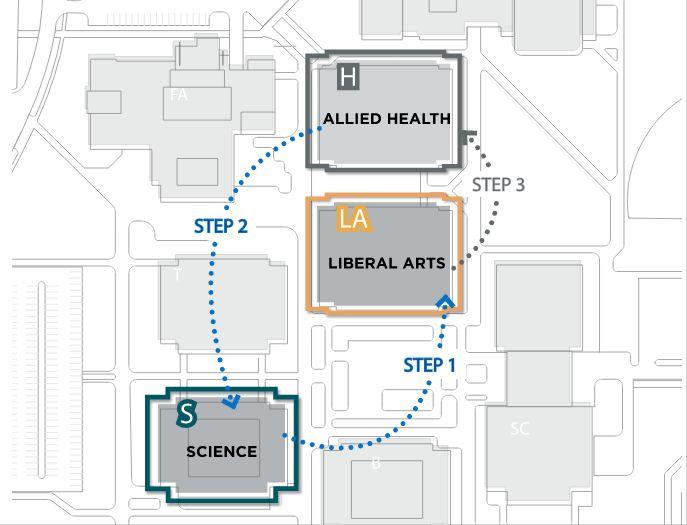

SCUP 2024 North Atlantic Regional Conference | #SCUPNA
ST
Transformation Through Renovation

NEW ALLIED HEALTH BUILDING NEW SCIENCE BUILDING



ST
Student Engagement Process
JH JB
Timeline: Overall Project
STUDYPHASE
WEARE HERE
CONSTRUCTION
SCUP 2024 North Atlantic Regional Conference | #SCUPNA
JH JB
2023
SCHEMATIC DESIGN
DESIGN
ENT
DOCUMENTS
DEVELOP-M
CONSTRUCTION MOBILIZATION JANUARY2025
2024 2025
SCUP 2024 North Atlantic Regional Conference | #SCUPNA Timeline: Outline of Meetings and Event Set-up JH JB
#1
WEARE HERE ACCESSIBILITY GOALS MTG UNIVERSAL DESIGN MTG INTERIOR EXPERIENCE MTG 1 INTERIOR EXPERIENCE MTG 2 KICK-OFF PROGRAMMING
DESIGN
STUDYPHASE SCHEMATIC DESIGN DD
2024 EVENT
EVENT #2
INCLUSIVE
2023
Student Engagement Process: Getting Started
● A non-prescriptive approach
● Began discussions with faculty/staff programming and let that help drive
● Meeting campus community where it is (literally!) & making sure they get there
● Structure AND flexibility
● Format of engagement and materials

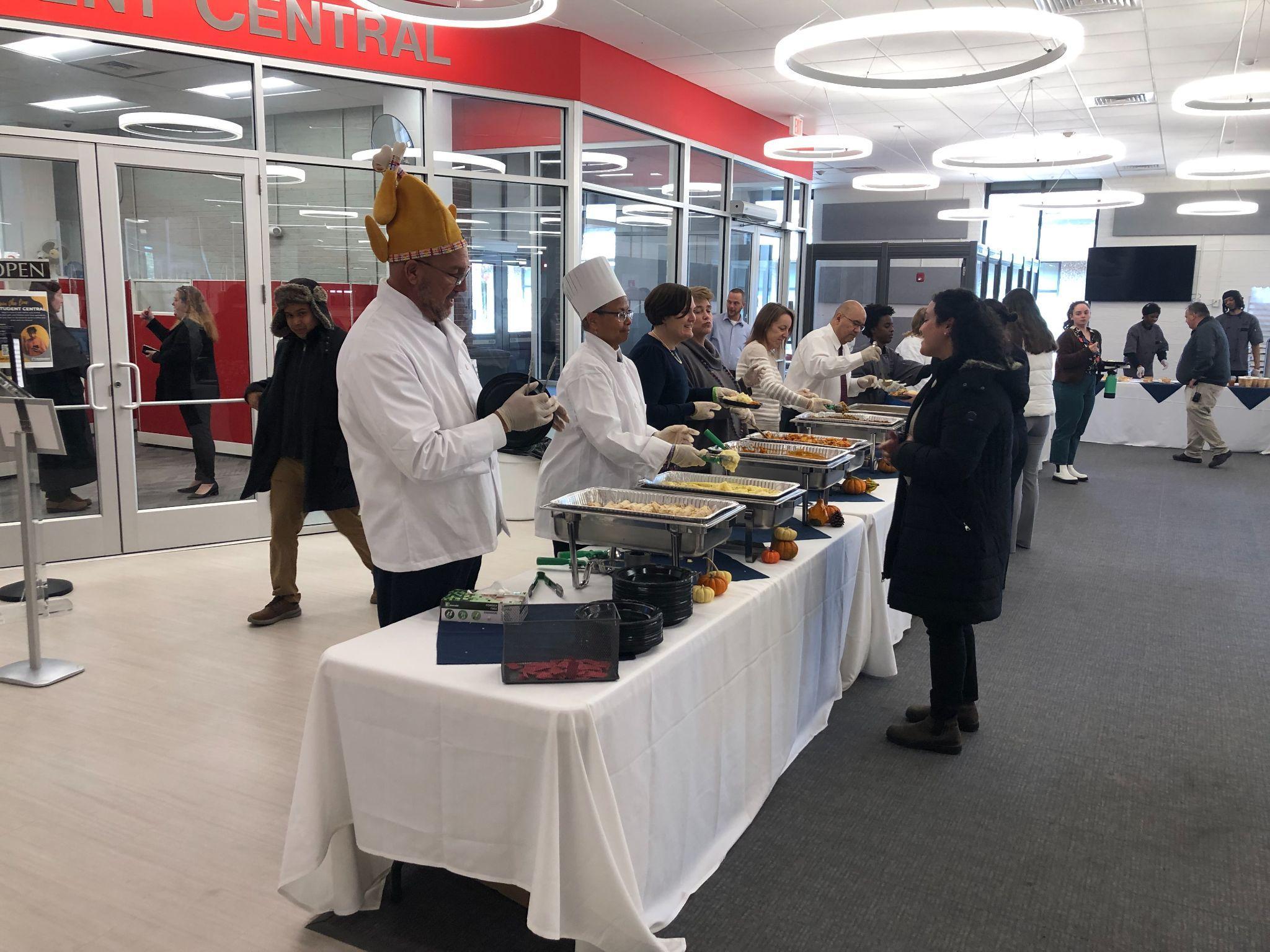
SCUP 2024 North Atlantic Regional Conference | #SCUPNA
Student Engagement Process: Event Activities
PROJECT INTRO
TEACHINGAND LEARNING
GATHERING AND COMMUNITY
QUESTION & SHORT ANSWER
VOTE ON PRECEDENTS
FACULTY SPACES
QUALITATIVE QUANTITATIVE
SCUP 2024 North Atlantic Regional Conference | #SCUPNA
JH JB ST
Student Engagement Process: Boards (Before)


SCUP 2024 North Atlantic Regional Conference | #SCUPNA
JH JB ST

Student Engagement Process: Boards (After)

SCUP 2024 North Atlantic Regional Conference | #SCUPNA
Student Engagement Process: Access & Visibility



JH JB
Student Engagement Process: Event Activities
ENTRANCES, WAYFINDING & SIGNAGE
TEACHINGAND LEARNING
GATHERING AND COMMUNITY
STUDENT STUDY& REFLECTION
VOTE &TELLUS WHY
QUALITATIVE
QUANTITATIVE
SCUP 2024 North Atlantic Regional Conference | #SCUPNA
JH JB ST
Student Engagement Process: Boards (Before)


SCUP 2024 North Atlantic Regional Conference | #SCUPNA
JH JB ST
Student Engagement Process: Boards (After)

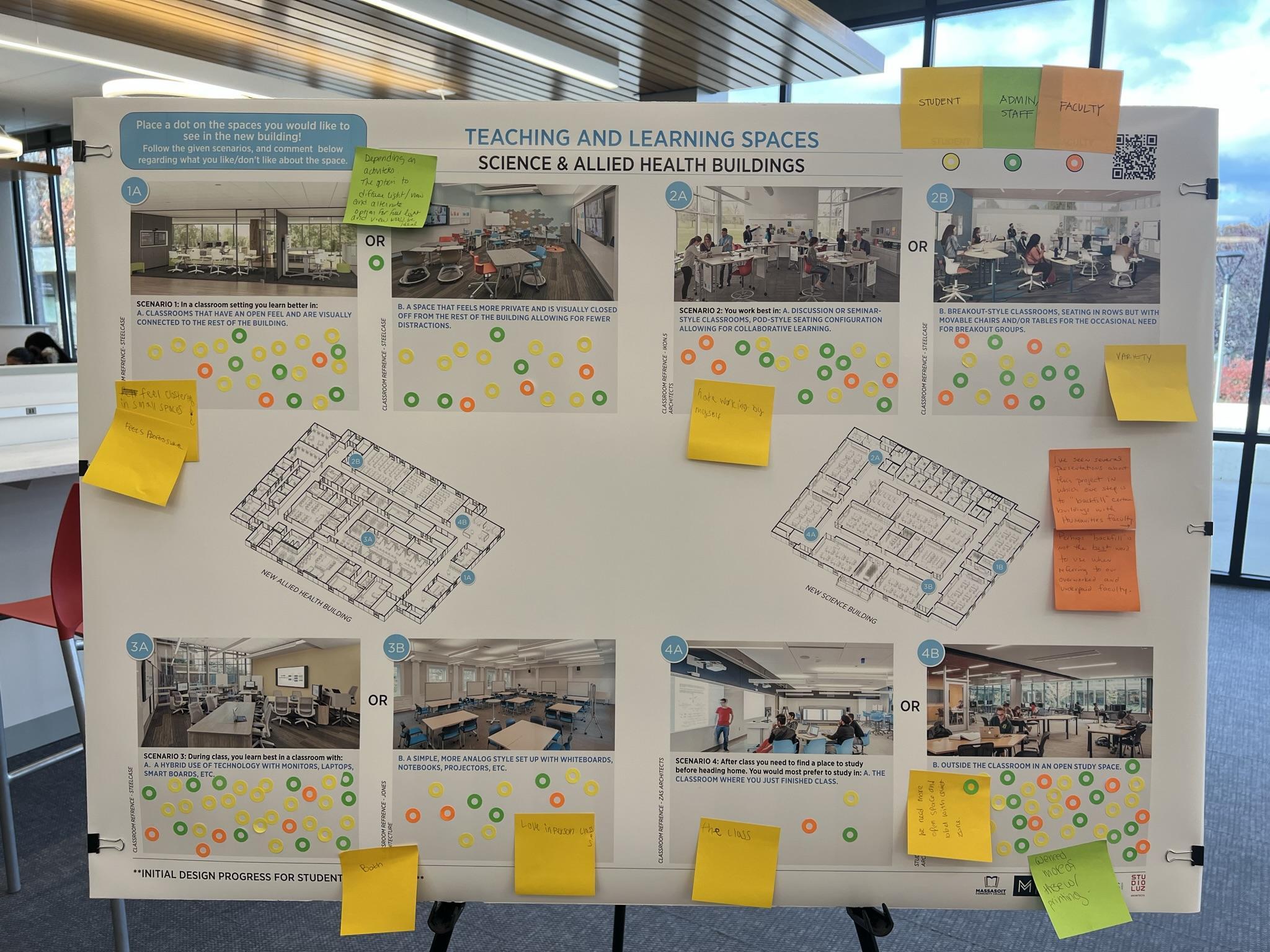
SCUP 2024 North Atlantic Regional Conference | #SCUPNA
JH JB
Establishing Metrics & Visualizing Results
JH ST

SCUP 2024 North Atlantic Regional Conference | #SCUPNA Establishing Metrics: The Data JH ST

SCUP 2024 North Atlantic Regional Conference | #SCUPNA Establishing Metrics: Organizing Feedback JH ST

SCUP 2024 North Atlantic Regional Conference | #SCUPNA Establishing Metrics: Presenting Feedback JH ST
Establishing Metrics: Organizing Feedback
We looked at the feedback more specifically on this round, taking care to highlight unique perspectives, not necessarily the most common. Comments were presented verbatim to avoid applying bias.



SCUP 2024 North Atlantic Regional Conference | #SCUPNA
JH ST
Results:
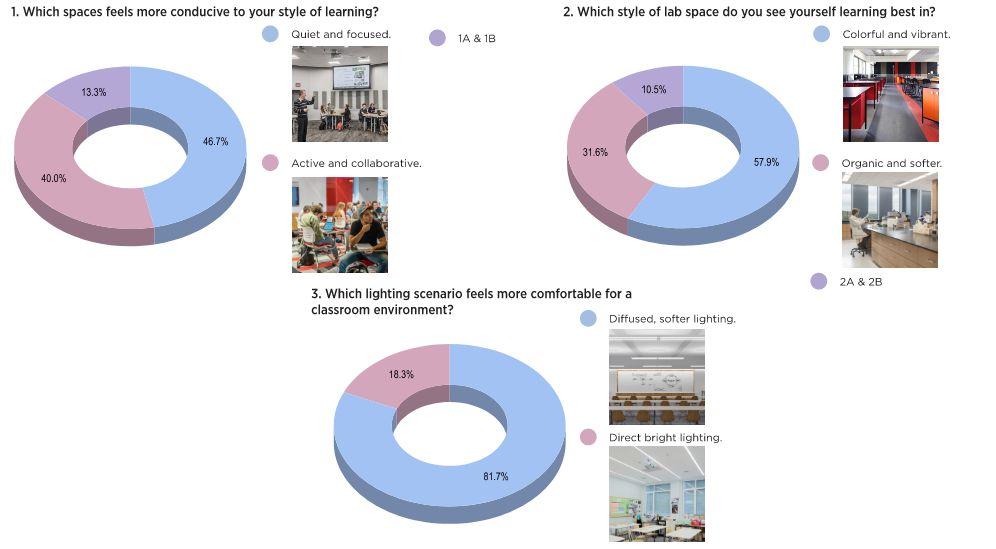
SCUP 2024 North Atlantic Regional Conference | #SCUPNA
JH ST
Visualizing
Presenting Feedback
Visualizing Results:

SCUP 2024 North Atlantic Regional Conference | #SCUPNA
Presenting
JH ST
Feedback
Establishing Metrics: Presenting Feedback
We summarized 3-5 key takeaways from each topic, then provided backup quantitative information from voting.


SCUP 2024 North Atlantic Regional Conference | #SCUPNA
JH ST
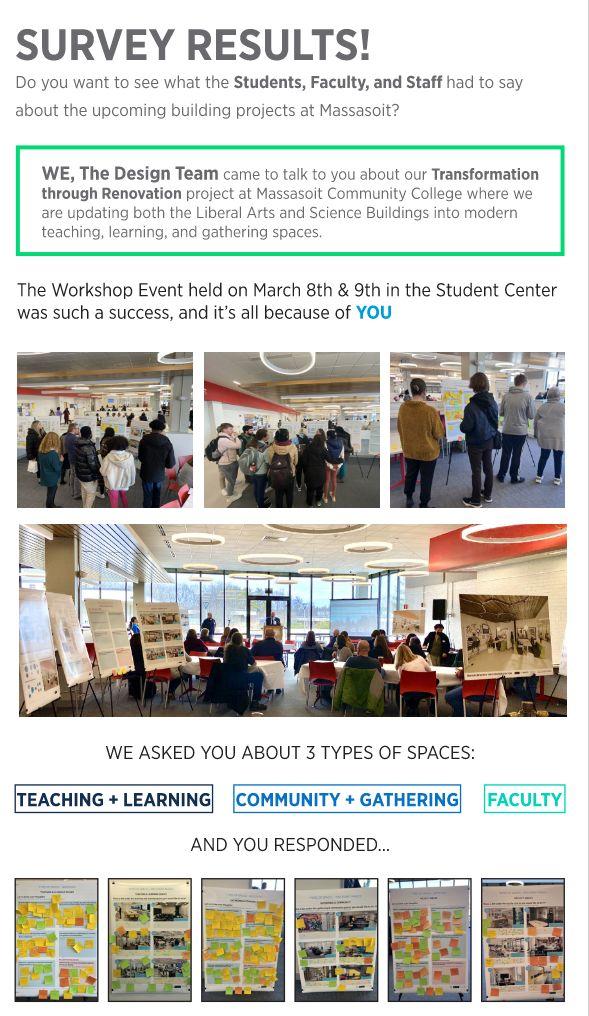





SCUP 2024 North Atlantic Regional Conference | #SCUPNA Visualizing Results: Reaching the Audience JH ST


SCUP 2024 North Atlantic Regional Conference | #SCUPNA
Audience JH ST
visit
Visualizing Results: Reaching the
For project information,
MCC’s website on the Transformation through Renovation project.
Translating Feedback to Design
JB ST
ACCESSIBILITY
GOALS MTG
STUDYPHASE
SCHEMATIC DESIGN
INTERIOR EXPERIENCE MTG 1 INTERIOR EXPERIENCE MTG 2
UNIVERSAL DESIGN MTG
SCUP 2024 North Atlantic Regional Conference | #SCUPNA
Establishing
JH JB
Translating into Design:
the Committee
DD 2024 WEARE HERE
2023 EVENT #1 EVENT #2

SCUP 2024 North Atlantic Regional Conference | #SCUPNA Valuable Outcomes: Architecture for Belonging JB ST


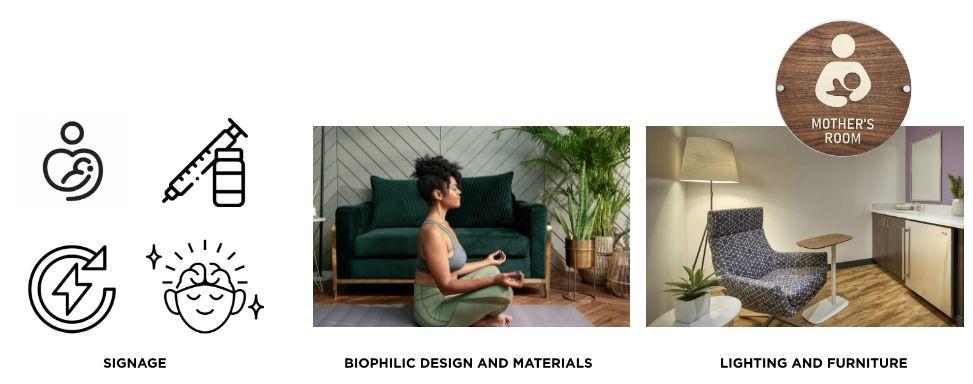

SCUP 2024 North Atlantic Regional Conference | #SCUPNA Valuable Outcomes: Wellness JB ST

SCUP 2024 North Atlantic Regional Conference | #SCUPNA Valuable Outcomes: Color Scheme JB ST
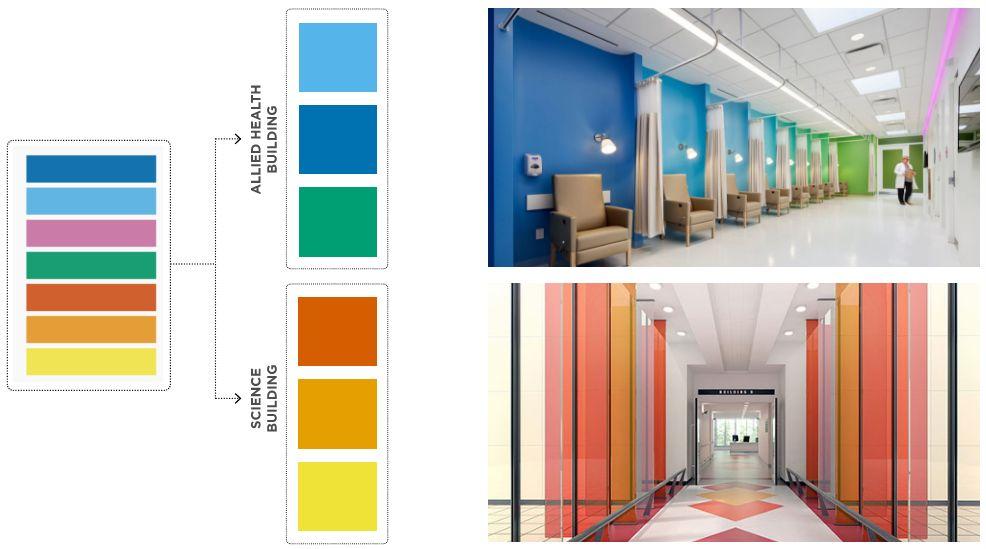
SCUP 2024 North Atlantic Regional Conference | #SCUPNA Valuable Outcomes: Color Scheme JB ST


SCUP 2024 North Atlantic Regional Conference | #SCUPNA Valuable Outcomes: Interior Wayfinding and Signage JB ST

SCUP 2024 North Atlantic Regional Conference | #SCUPNA Valuable Outcomes: Campus Wayfinding JB ST

SCUP 2024 North Atlantic Regional Conference | #SCUPNA Valuable Outcomes: Campus Wayfinding JB ST

SCUP 2024 North Atlantic Regional Conference | #SCUPNA Valuable Outcomes: Exterior Signage JB ST

SCUP 2024 North Atlantic Regional Conference | #SCUPNA Valuable Outcomes: Exterior Signage JB ST
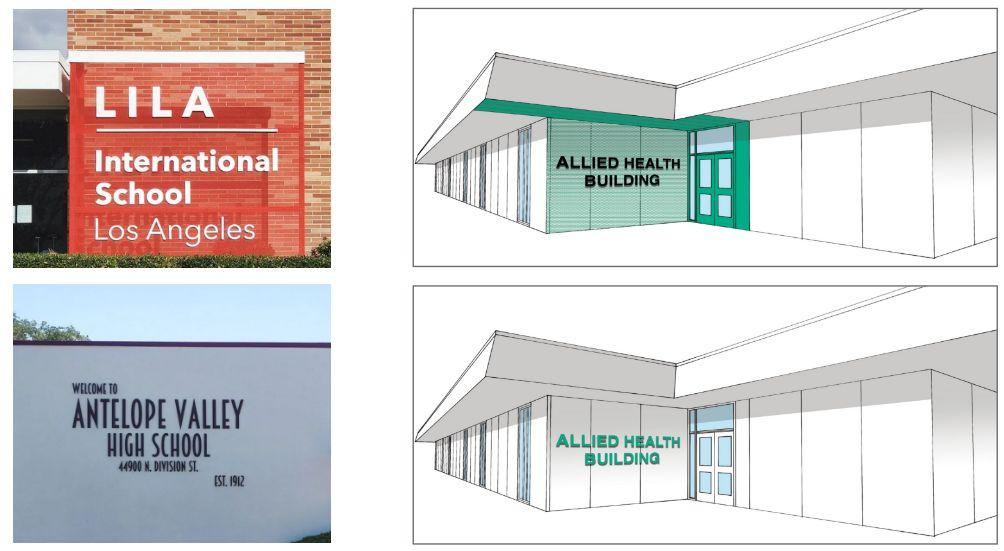
SCUP 2024 North Atlantic Regional Conference | #SCUPNA Valuable Outcomes: Exterior Signage JB ST


SCUP 2024 North Atlantic Regional Conference | #SCUPNA Valuable Outcomes: Community and Gathering JB ST


SCUP 2024 North Atlantic Regional Conference | #SCUPNA Valuable Outcomes: Community and Gathering JB ST

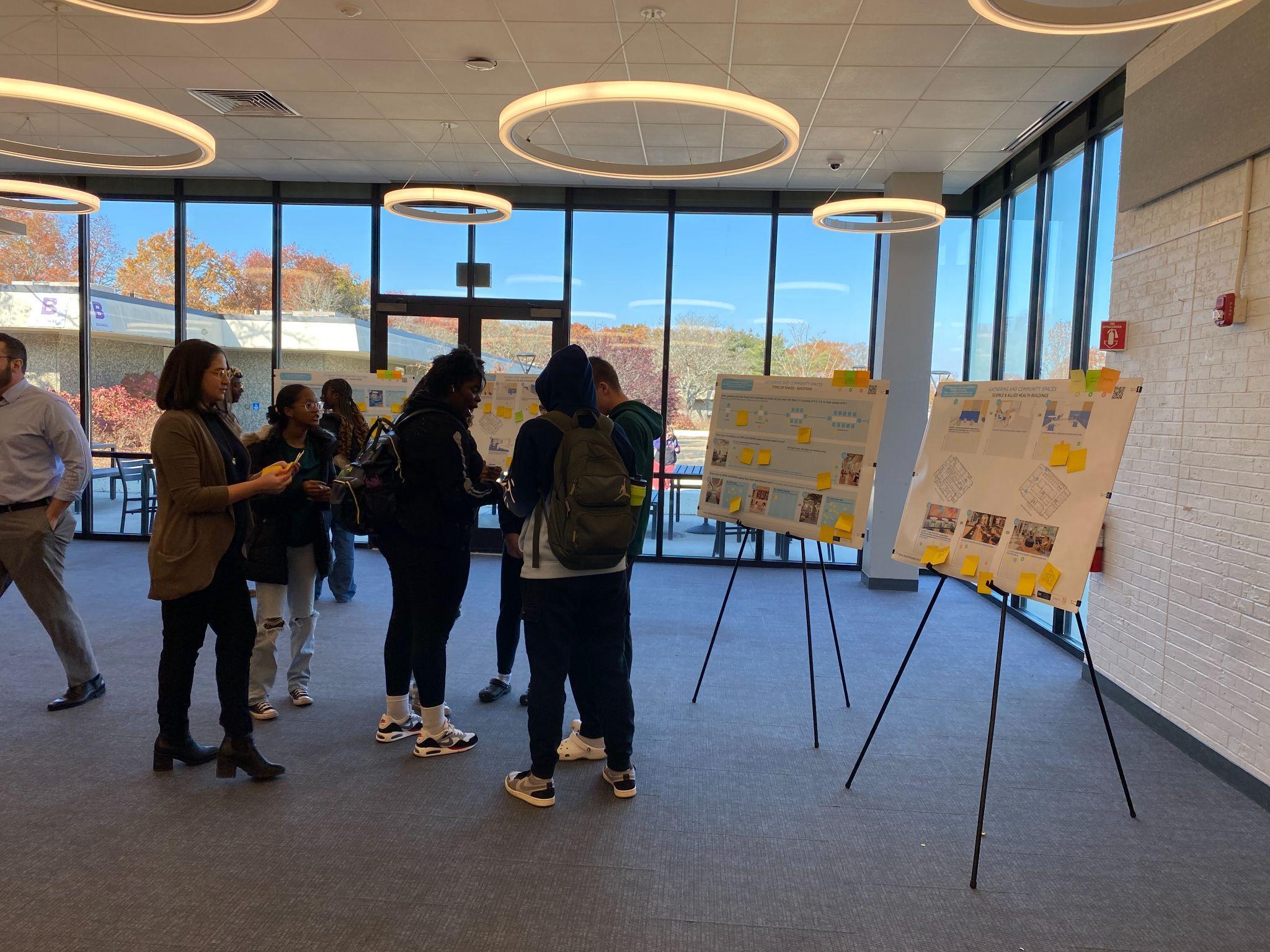
SCUP 2024 North Atlantic Regional Conference | #SCUPNA Key Takeaways JH
Investment
Time
Team
Communication
Flexibility
Customization
1.
2.
3.
4.
5.
6.
Transformation Through Renovation

SCUP 2024 North Atlantic Regional Conference | #SCUPNA
ST
Q&A
Thank you! SCUP 2024 North Atlantic Regional Conference | #SCUPNA







































































